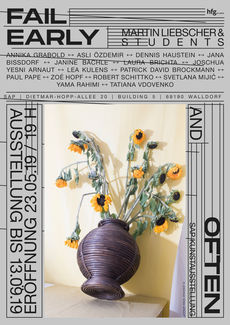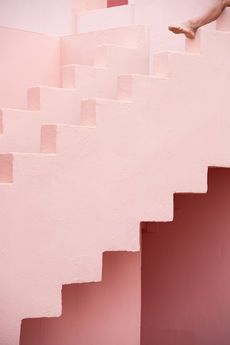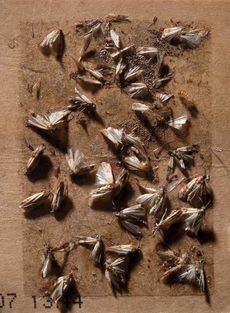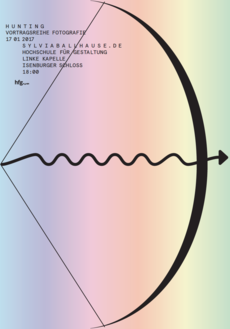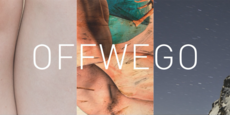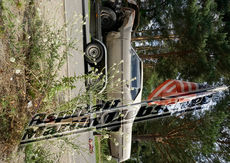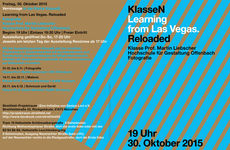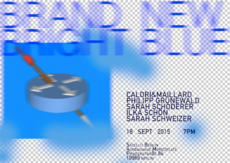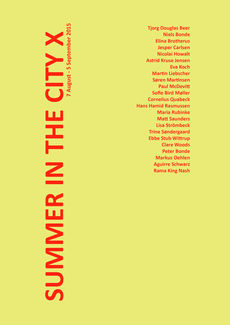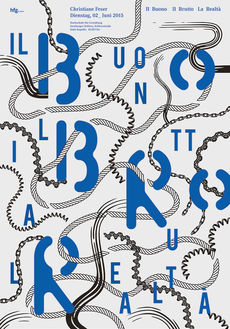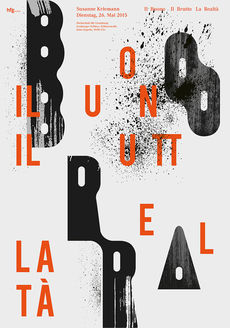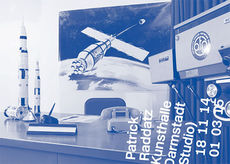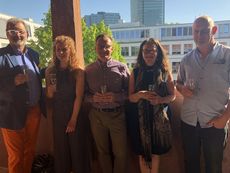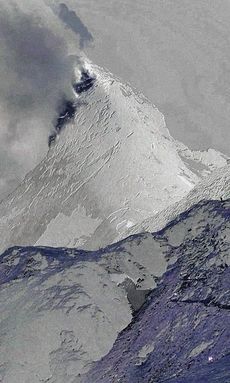Photography
-
Prof. Martin Liebscher
T +49 (0)69.800 59-271
Isenburger Schloss, room C207
Florian Albrecht-Schoeck
Artistic staff an foto studio teacher
albrecht-schoeck@hfg-offenbach.de
T 49 (0)69.800 59-271
External
Writing with light
Photography at Offenbach University of Art and Design tackles the artistic possibilities of digital and analogue pictorial invention. Photography is the central medium of the digital revolution; it is the main player in the gentrification of vision. The pictorial >invasive species< have long since taken over most of our world – now nobody need be physically present to be able to see anything. The stammering language of brief electronic communications goes hand in hand with the loss of a physical encounter into the Nirvana of exponentially growing image data. The release as a dead man’s button. This one second in which these images live: pose, post, post mortem.
But: how does one create something lasting, something that interests not just the photographer and the photographed? What’s required is the exploration of new definitions, ways and validities of the images. Given the open structure with which the subject areas are networked, the University of Art and Design represents an exciting laboratory where questions can be formulated, experiments launched, failures accepted and answers found.
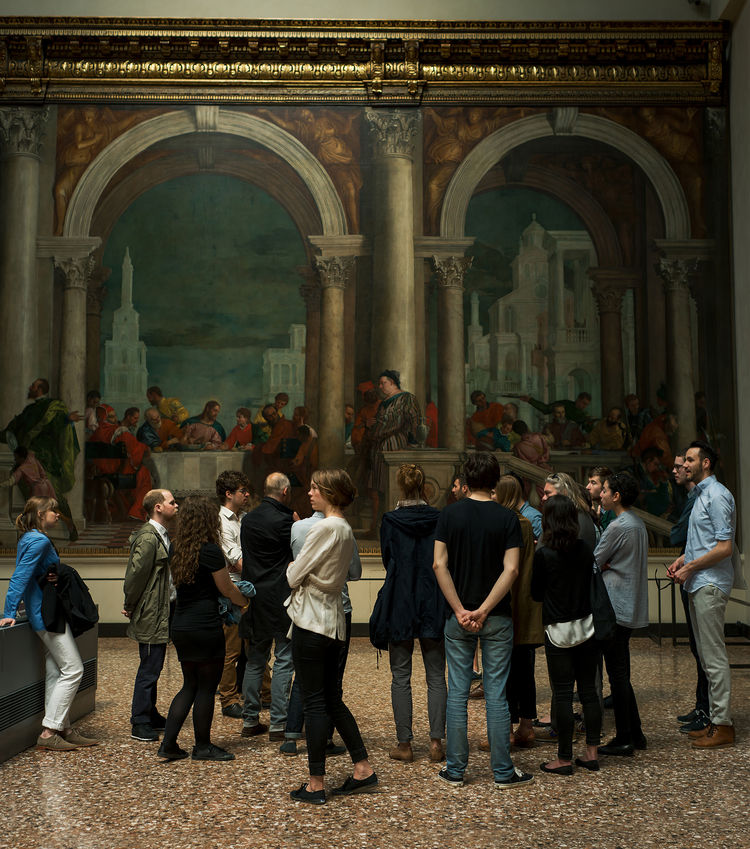
Venedig, 2013
Photo: Rudi Weißbeck
Doctoral candidates
Ornella Fieres
The occult digital – Phenomena of the occult in digital culture and contemporary art
Tutors: Prof. Dr. Marc Ries, Prof. Martin Liebscher
Ulrich Gebert
Other-worldly things. Photography, New Objectivity and relationship to the world
Betreuerin: Prof. Dr. Juliane Rebentisch, Prof. Martin Liebscher
Margret Hoppe
Serial Aesthetics. A design theoretical study on the social function of design
Tutors: Prof. Martin Liebscher, Prof. Marc Ries
More informationen
Projekte 2018
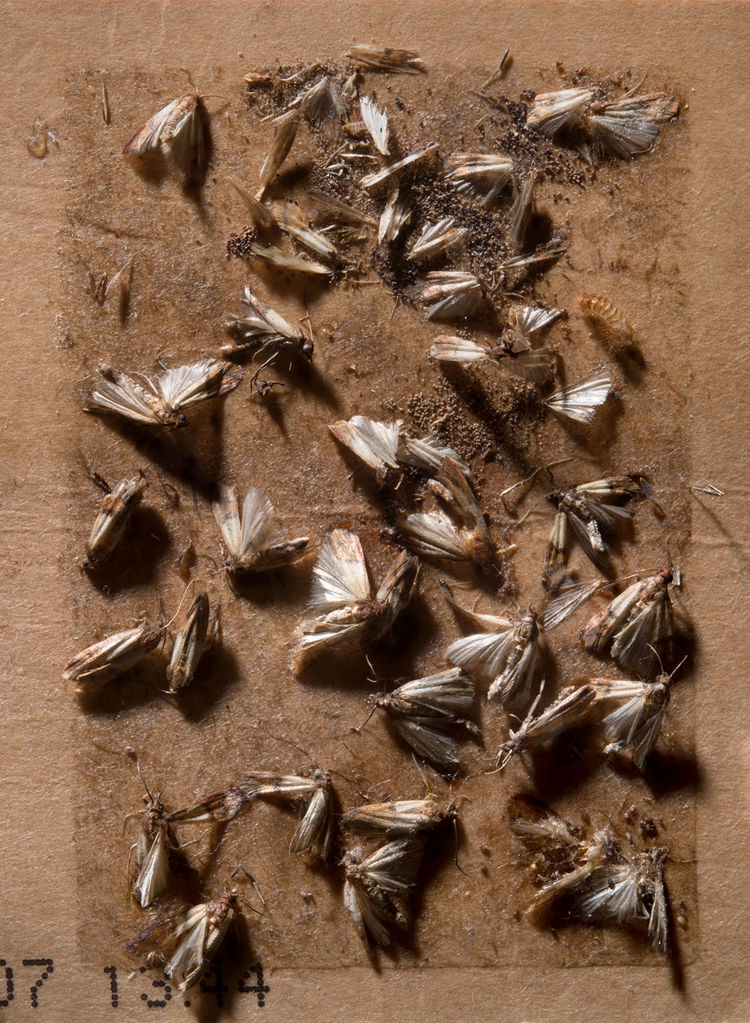
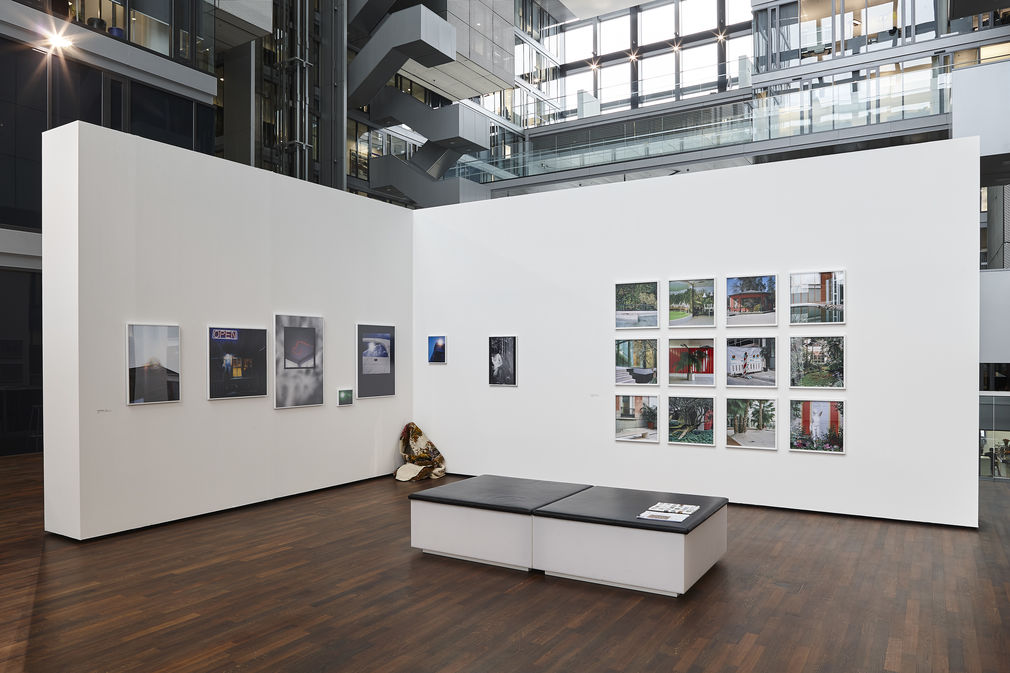
Exhibition view
Photo: Albrecht Haag
The Biography of Things
February 2 through to April 27, 2018
Art Collection Deutsche Börse
Deutsche Börse AG, The Cube, Eschborn
The Biography of Things
The exhibition The Biography of Things explores when and how photography transforms things into agents and enables new realities to emerge. In our day-to-day lives we are surrounded by objects. They are not only part of our environment, but also provide information about how we perceive our surroundings and want to be perceived ourselves. Now and then an object can develop an unclear, almost mysterious vitality so that it can no longer be understood merely as a thing. In artistic inquiries the camera assumes an intermediary role – as a telescope with a view into the world of things that appear subjected to their own laws and test our perception. If one looks more closely at the objects we surround ourselves with, produce, process or simply come across, then it is always also a look in the mirror: Through the medium of photography, which can equally depict reality and create fictions, portraits of things teach us how we see our environment and ourselves, or how we would like to be seen.
The Biography of Things is a cooperation between Deutsche Börse Photography Foundation, the Liebscher photography class at the Offenbach University of Art and Design (HfG) and students in Curatorial Studies at the Goethe University/Städelschule in Frankfurt.
At the initiative of the Deutsche Börse Photography Foundation students taking a Master of Arts in Curatorial Studies curated an exhibition featuring photographic works by HfG students. The aim of the collaboration was to give both groups of students experience in realizing an exhibition. Some 80 works by 15 HfG students were shown, complemented by a comprehensive selection of works from the Art Collection Deutsche Börse that also reflected the same theme. A temporary exhibition project with works by five HfG artists was also installed on the exterior space of C level at Hauptwache in Frankfurt city center from February 12 through to March 5, 2018. A catalogue was produced to accompany the exhibition.
Participants
Zani Arkadina, Janine Bächle, Jennifer Bannert, Laura Brichta, Urs Tilman Daun, Béla Feldberg, Annika Grabold, Dennis Haustein, Johannes Lenzgeiger, Felicitas von Lutzau, Nico Anthony Mason, Malte Sänger, Robert Schittko, Jochen Stierberger and Rudi Weissbeck
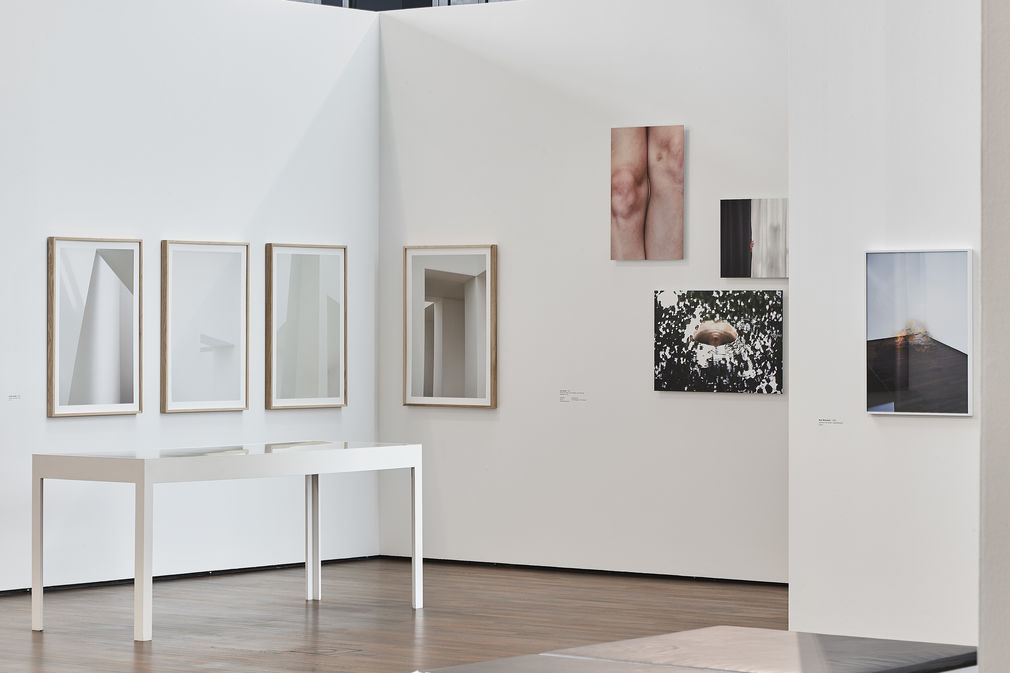
Photo: Albrecht Haag
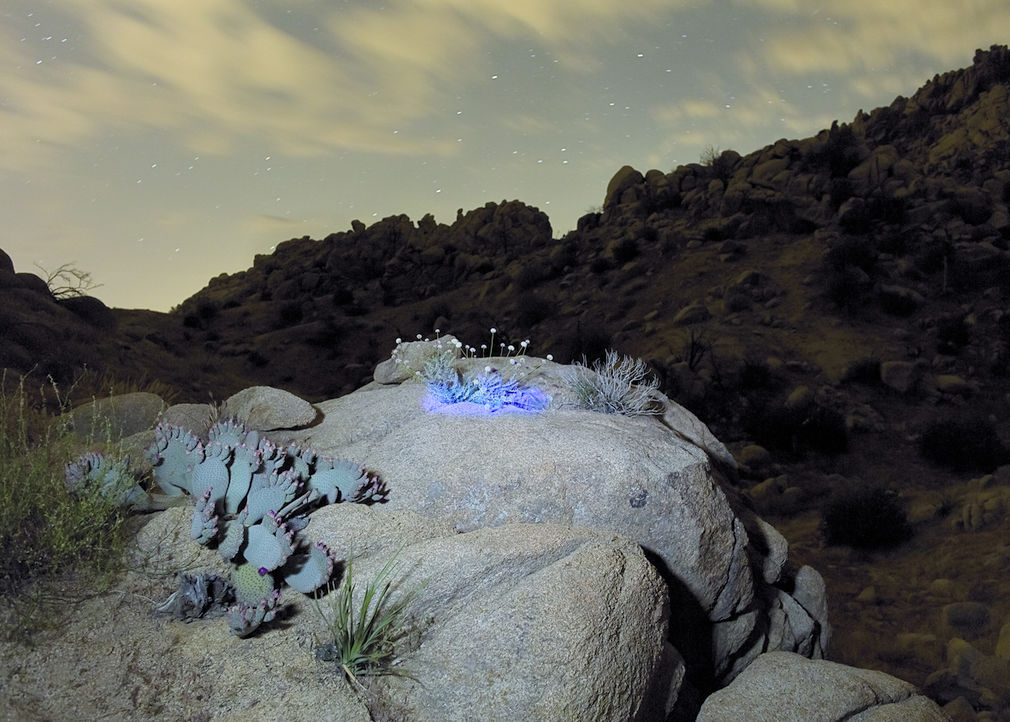
America
series
Felicitas von Lutzau
Comment ai-je pu me perdre?
Die Fotografie durchstößt das Raum-Zeit Kontinuum. Die aus der Zeit gefallenen Bilder verweben sich zu einer Auflösung der Zentralperspektive. Der deutsche Künstler und Professor für Fotografie Martin Liebscher sowie Anne-Marie Beckmann von der Deutschen Börse Photography Foundation haben Arbeiten von Kunststudierenden ausgewählt, die sich mit dem Verhältnis von architektonischem und bildnerischem Raum auseinandersetzen.
Mit Arbeiten von Janine Bächle, Laura Brichta, Urs Tilman Daun, Annika Grabold, Dennis Haustein, Nikolaus Kockel, Felicitas von Lutzau, Paul Pape, Malte Sänger, Robert Schittko, Jochen Stierberger, Rudi Weissbeck
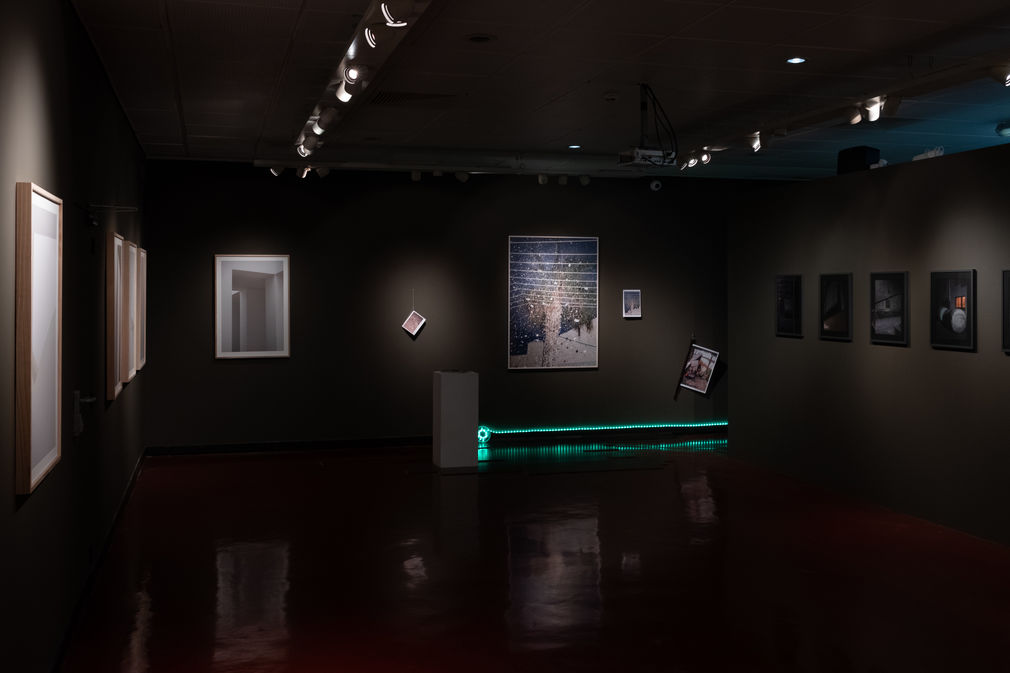
13. April bis 10. Juni 2018
GOETHE-INSTITUT PARIS
17 avenue d'Iéna
75116 Paris
Mit Unterstützung der Deutschen Börse Photography Foundation. Im Rahmen von Focus Frankfurt
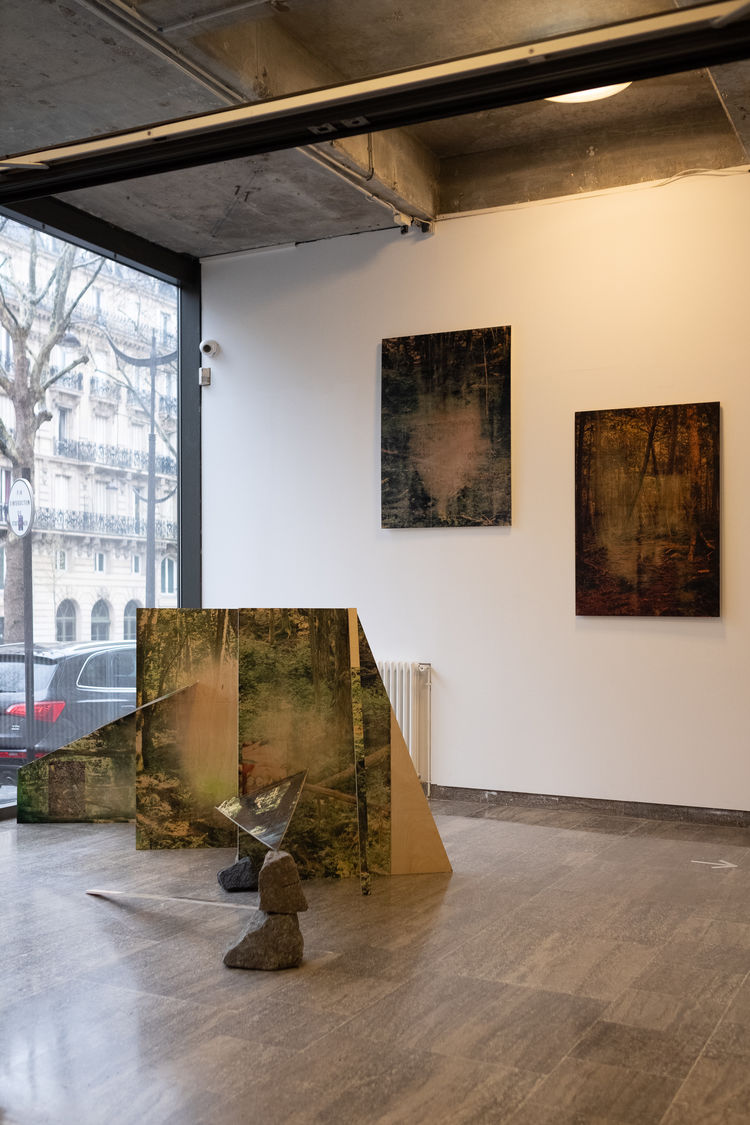
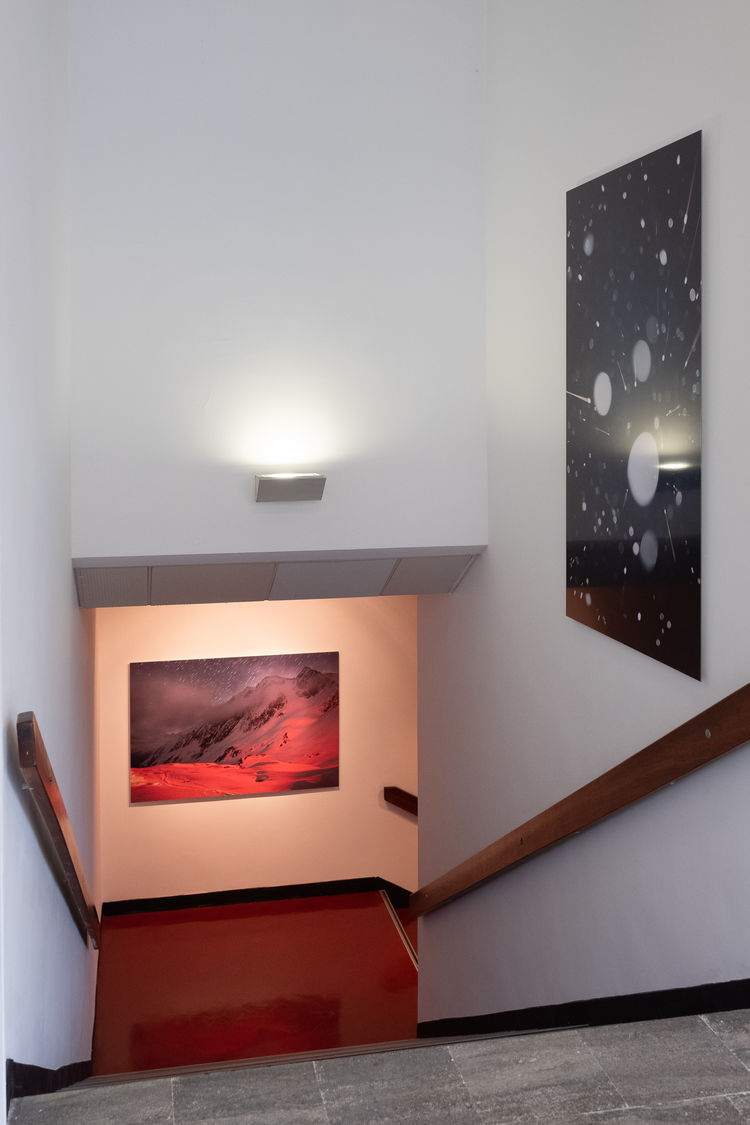
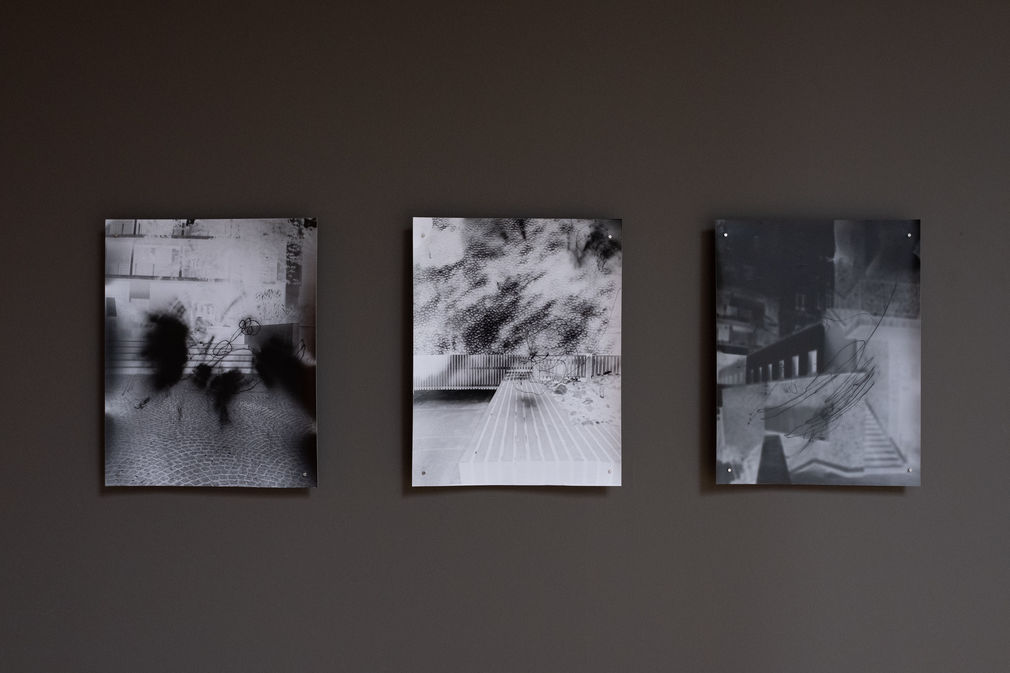
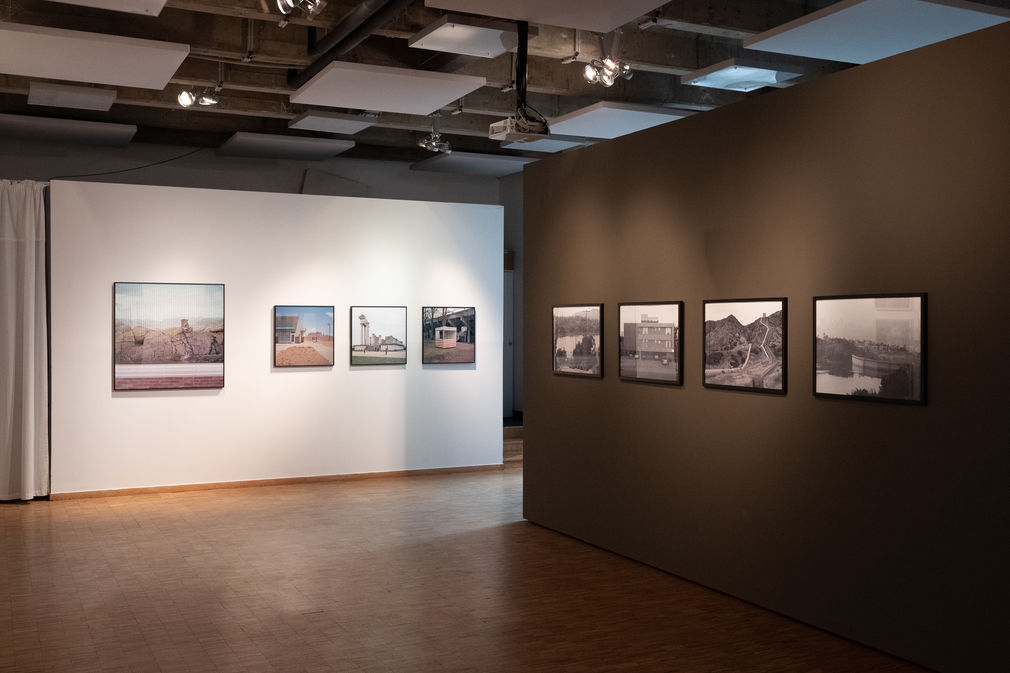
Projects 2012 to 2014
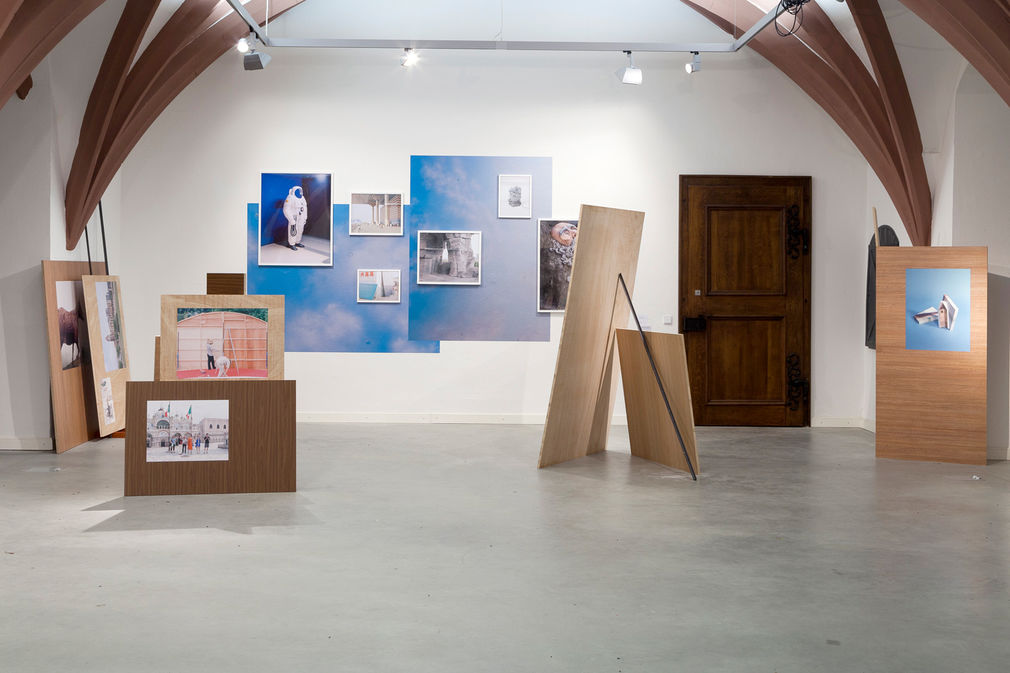
Absolute Geography
Annual show 2013
Projects 2013/14
»Less is a bore« said Robert Venturi in 1969
International Modernism has failed and, like a stock cube, has dissolved in the globalized soup of the visually overwhelming city landscapes of the 21st century.
In Pisa, tourists all follow one collective image idea: Dozens of travellers seem to be making the same tai chi movements. It is only once the image emerges from an exact point of observation that it becomes clear, through the reduction of the spatial dimensions to a flat image, that the cycloptic device makes it appear as if the leaning tower is being prevented from toppling over by the posing subject. This simulation is consequently being recreated in front of the replica of the tower among the models on display in Beijing’s World Park: Precisely the same gesture is adopted so that the faked reality becomes a new image reality in the double negation.
The Venetian Resort Hotel in Las Vegas is a fake, urban version of the lagoon city. The hyper-reality of a replica of this island city languishing in brackish water in the middle of a bone-dry desert is the true mirage of the postmodern. Since Scott Brown and Venturi’s »Learning from Las Vegas«, the profane »Disneyfication« of historical buildings has been driven to the extreme on a massive scale. Las Vegas is the role model for a city as event. Our urban reality is peppered with post-postmodern set pieces based on actually constructed spaces, artificial stones and the image reality of black holes of house-high mega-posters.
Which image of the city can be found and which impressions of the urban space can we create? Photography is a pirate copy of reality.
Parasitography
Wintersemester 2013/14
The most repellent thing in photography is light. Without this host, this two-faced beast which, in the most repugnant way, takes the form of both waves AND particles, the image will end miserably. Photography hangs on reality like a tick. The ecto- or external parasites, namely the subjects, are the basis of the existence of the light yield with its central perspective. The endo- or internal parasites are the merciless second-hand utilization of rehashed images. Gaining access to these semi-decayed image files is easy: our oh-so-good friend Google spits out millions of these micro-parasites onto our desks. The parasitic data thief need not even leave the reality of his room in order to roam the world’s most deserted streets thanks to transport host Streetview. A particularly promising factor is the suctioning off of errors in the images – a search for the putrid wounds of mutations.
Silver photography is dying a death – in the end it was nothing but a dead-end host; the silver larvae settling in its gelatinous substrate are eaten up by digital mutants.
Antimatter
Summer Semester 2013
Photography without a subject is a black hole in the image cosmos. The index, that which is essential reality for the photographic image, vaporises into dust in abstract photography. Since the very beginning of photography there have been two trends: the pinpoint-accurate, central-perspective portrayal, and the struggle to free the image from likeness. Only the latter leads from the dissolution of reality to a truthfully autonomous image. The photographic kernel is still representational, namely the physical portrayal of a silver halide. In its most profound depths, the digital image is abstract in relation to the latent structure of the code.
Reality sucks.
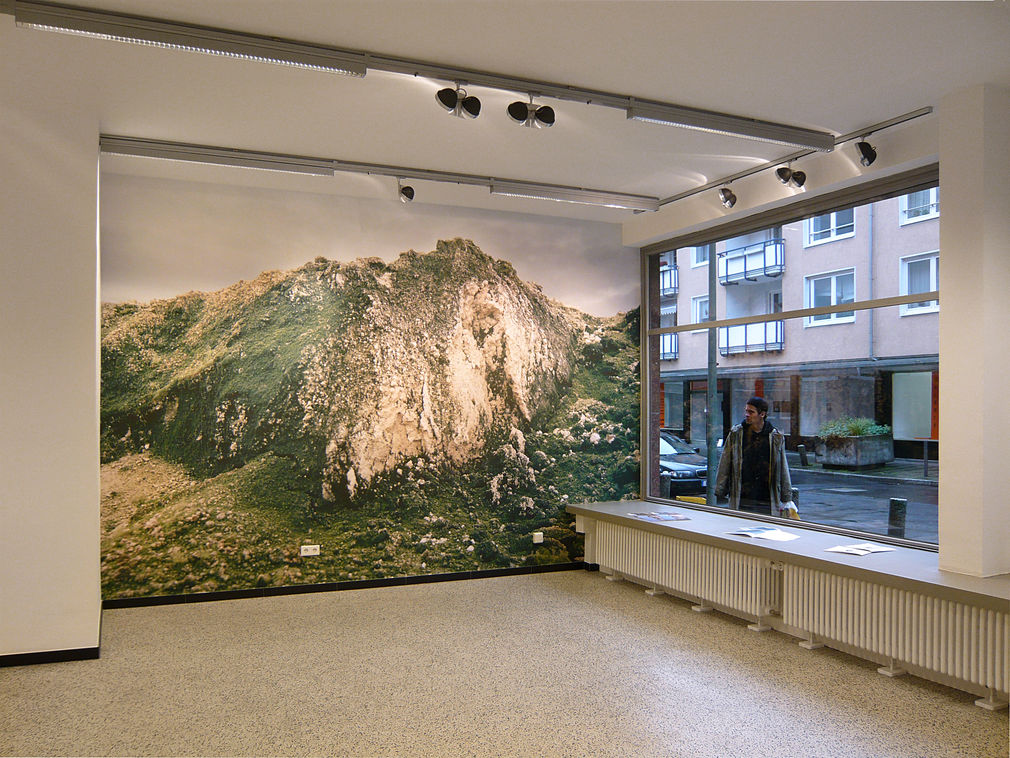
Sightseeing
Exhibition view, Timo Klos, 1822-Forum Frankfurt, 2008.
Projects 2012/13
F For Fake - Falsification
The deliberate creation of an object to deceive third parties.
Winter semester 2012/13
The apparent truth of the photographic portrayal has always brought about the temptation to manipulate the objective circumstances. Today, photographic images are our golem. Other means of communication, such as the spoken or written word, are being resolutely exterminated in the visual evolution. In the midst of the explosive expansion of the >visual<, uninvited guests disappear from images, water turns to blood, and photoshopped models mutate into the Frankensteins of the 2010s. The pictorial >invasive species< have already conquered most of our world – now nobody need be physically present in a place in order to perceive that place.
Strangely, in the meantime the apparent quota of truth has been reversed: the discovery of photography heralded the objective self-portrayal of the world with a richness of detail never before achieved by human hands. Now we are giving our blurred mobile phone shots greater authenticity as super-sharp megapixel images in which the world is portrayed with pinpoint accuracy. The nostalgic longing for the analogue, the authentic, the true, is the backdraft of the image ocean. Who has the chance to travel to where the image was actually taken to see that Google doesn’t lie and the Curiosity rover is not just taking pictures of the Mojave Desert?
The device as an artwork
Summer semester 2012
Absurd though it is, the camera cannot actually perceive itself – it remains invisible in its own images. The all-seeing machine that cannot see itself. Just as we can only perceive our own bodies in parts, or as a whole merely in the reflection of a mirror or in photos. This blindness of the outwardly seeing device can only be remedied in projection. In observing the image of our bodies, our eyes take the place of the black hole of the lens – that which appears on our retina is the echo of what the camera once saw. Some artists direct their focus on the device itself and butcher the industrially manufactured machine and its central-perspective doctrines. They manipulate the device, eviscerate it, abuse it with hammers and soldering irons or build devices themselves out of tin cans, tortoiseshells or houses and thus transform the machine itself into an artwork.
Thus Miroslav Tichý builds his subjects and cameras himself and becomes invisible as the voyeur: it is apparent that nobody believes in the viability of the devices. The American Abelardo Morell converts entire hotel rooms into camera obscuras, Steven Pippin transforms the complete passport photo machine into a pinhole camera, builds photographic washing machines in which the images can be developed and soaked directly or transforms entire houses into pinhole cameras.
Thomas Bachler uses his own body as an image generator by using his lips to form the lens, which exposes a film placed in his mouth. Michael Wesely builds cameras with an exposure time lasting several years. Mirjam Kuitenbrouwers creates photo-objects into which the subject is incorporated directly. Krebs & Onorato make tortoise shells and photobooks take photos, Ottmar Hörl flings his Nikon from a plane – thus it photographs its own death. Doug Rickard and Viktoria Binschtok can photograph the world without even leaving their homes. In Google Earth we are inside a global camera that has already established time and place, a remote release for which only the segment need now be determined. The seeing device detaches from the body. NASA fires remote-controlled eyes all the way to Mars and thus sees images without the necessity or even the possibility of the photographer being physically present.
Projects 2009 to 2012
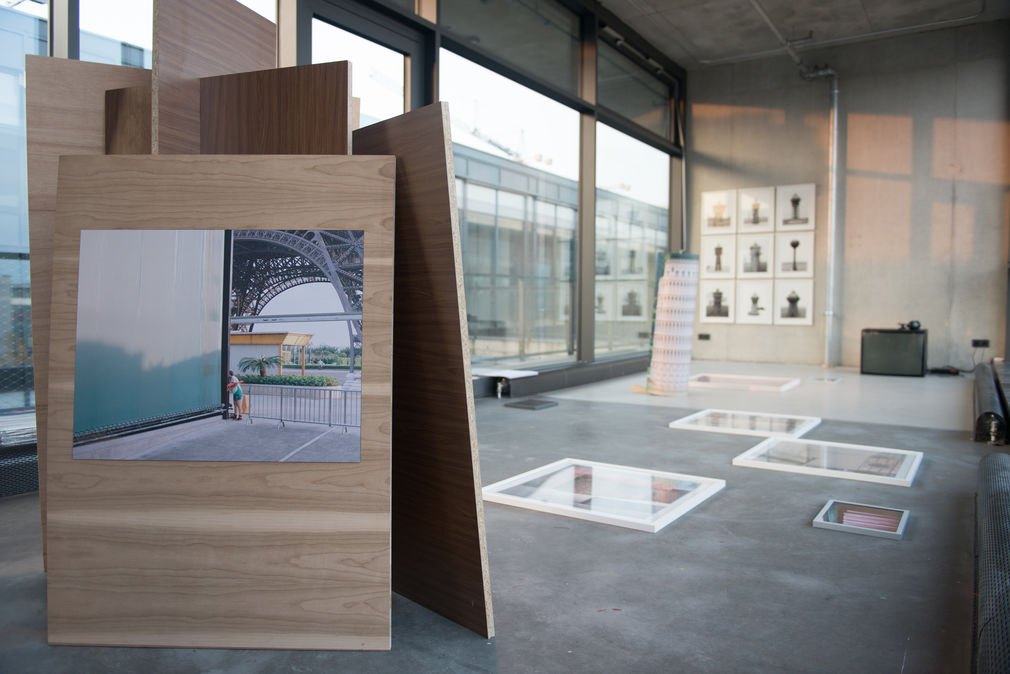
Mini Europe
Exhibition, Month of Photography, Berlin 2013
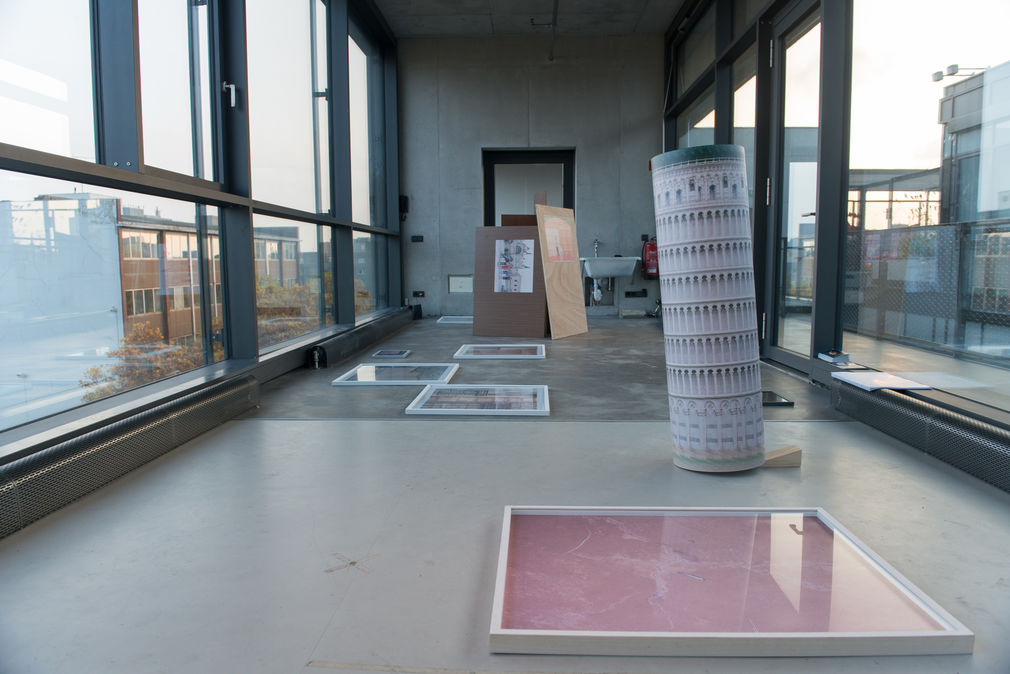
Mini Europe
Exhibition, Month of Photography, Berlin 2013
Projects 2011/012
Image & Reality
Smith & Wesson
Wintersemester 2011/12
The treasure in the silver bromide sea – Karl May has never been to the USA and yet has helped shape our vision of the days of the American pioneers. The story told overrides the actual events. Our image of the American way of life, of endless breadth on the road, is largely determined by mediatised images. Travellers seeing the skyline of New York for the first time experience a place that has been ingrained in their minds since their earliest childhoods through countless reminders. Deep-seated images that go back to the first scraps of memory – of a place that the person has never actually been to before. The reversed timeline – first the memory, then the real experience – causes a crash, a shock of consciousness, which is spectacular for our contemporary perception.
We know America before we’ve even been there. It is precisely the image worlds of the technical, photographic self-portrayal of nature that produce this shimmeringly believable reality. From the 1960s onwards, the originally social-documentary positions of a >straight photography< were increasingly transformed into a self- and media-critical art. The technical media, feeding on reality like slavish parasites, are available for everyone so that image creation becomes democratic. Any dunce can use them; Europe invented photography whilst, with Kodak, America brought the first disposable camera to the market: You press the button, we do the rest.
The American western likewise oscillates between imagination and historical narrative. The history is no longer verifiable – it has been lost in time. Yet the early westerns mythologise the past and claim a reality of their own. The 90-minute apparent reality breaks up in later westerns; as in art, the genre must also reflect, criticize and view itself ironically in order to survive. The European spaghetti Western makes use of the images and myths in order to free the western from its claim to truth with a showdown of the double negative in the Spanish desert.
Collecting, collector, collection
The artist as a collector
If you believe Freud, then man begins to lustfully collect and hoard (himself even) as early as the anal phase – at two or three years old. Later he will spend hours exchanging Kinder Egg figures or in the enormous image collection that is his own hard disk and the internet – the temple of sprawling messy accumulations. We collect vast quantities of digital images – and yet at the end of the year only a handful remain relevant. So how come so few pictures go the distance? What are our selection criteria and when and where exactly do we come up with them?
There are two basic methods of image procurement: for the sedentary image host the targeted upkeep and cultivation of the images is key, and this is done in stationary fashion. The hunters and gatherers have to get out and about: in order to snatch the images from reality, they roam their hunting grounds with photographic equipment of greater or lesser sophistication. Where similar or the same things or conditions are required, the camera obscura is particularly suitable. This act of collecting can spill over into conceptual photography.
Collection as an art
The greatest bounty is sold in the market and the buyer proudly takes his catch home. The collector is an image-hunter too, although he falsely takes all the credit. The hunter has created the image, the collector exhibits it. The cabinets of wonders back in the late Renaissance period presented not only astounding rarities and curiosities, but also their owners.
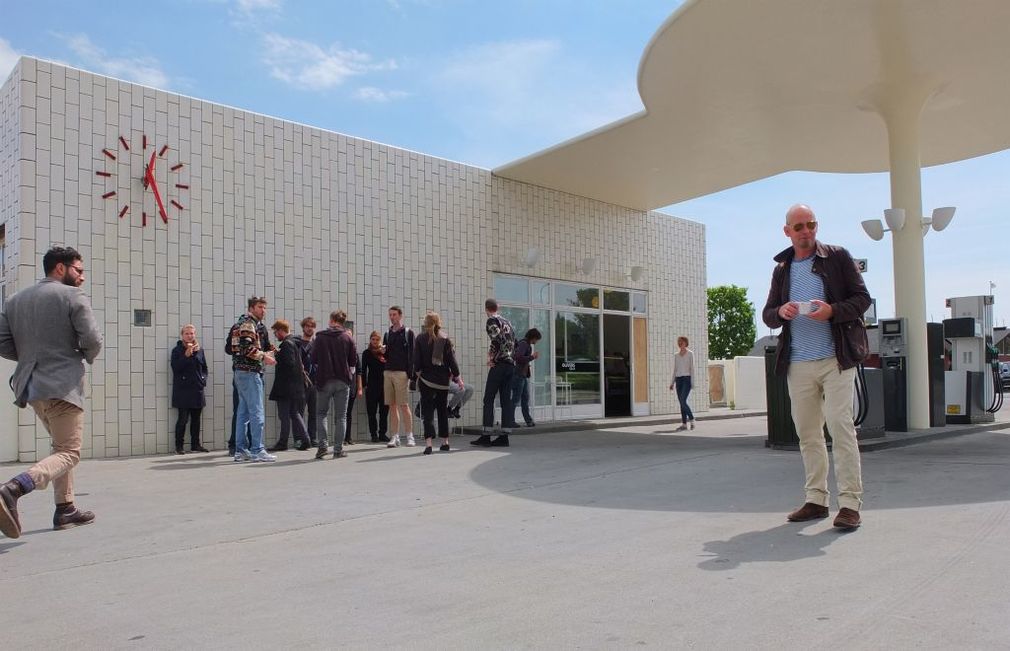
Arne Jacobson Tour
Copenhagen, 2012
Projects 2010/11
On the disappearance of things and the edge of the world
Absences in the image
Winter semester 2010/11
Two men look into one hole. We see only sight – that which arouses their interest is not apparent. The edge of the photograph is the end of the visible image world. In the traditional image world, what can be seen in the image is that which is being portrayed. Photography as an excerpt of the world, however, conceals everything that doesn’t appear in the viewfinder. What happens outside the field of vision? Is the world a flat plate or is the image a sphere?
Edges
Where does art stop and insanity begin? How come not only the visible world, but also thoughts and the inside of bodies can be photographed? What’s going on behind my fridge – and how can I photograph it? Do jets of cold influence the chemical development of the Polaroid?
Images of the disappeared
The photo is brutal. A photograph shows everything that reflects light and is in front of the lens in the moment the shot is taken – without judgement, without differentiation. Be it alive or dead. Searching for traces: can things that have disappeared be portrayed? How can things burn into the silver gelatine when they are no longer part of our contemporaneity?
Negative-land
A photograph portrays one moment, the split second after the moment of release that is already long gone and irretrievable. The attempt to snatch an image from time manifests itself in the image as an actual thing. The image and not that which is depicted becomes the truth. Captured for eternity in photographs, the dead gaze out at us. A window into the realm of the zombies and the undead. Yet can photography work in the opposite direction? Instead of the inevitable disappearance of the subject and – in contrast to this – the stable, static image, can the disappeared or disappearance per se be portrayed?
Double Room
The world as a picture. The universe of staging. - Area 51
Sommer semester 2010
In the classic film »Capricorn One« Brubaker, Willis and Walker simulate their mission to Mars in the studio and have to acknowledge that they can only return to reality dead. The escape from the deathly spectacle takes them into the Mojave Desert and, for the last survivor Brubaker, ends in reality: the staging of his own funeral. Reality overnights in the restaurant on the edge of the universe. In the Transient Rooms, the staging areas of the images, reality remains as an overcooked main course with rejected side orders on the plate of the illustration matrix. Semi-digested, the banquet is cleared away – the light reflection sends remains of the reality of the images to our brains. That which is portrayed is the Avatar in the second life of the images. We will snatch control over the images from the pinpoint-accurate portrayal, control reality and stage the image setting for ourselves. Reality is dead – long live the image! The answer is 42.
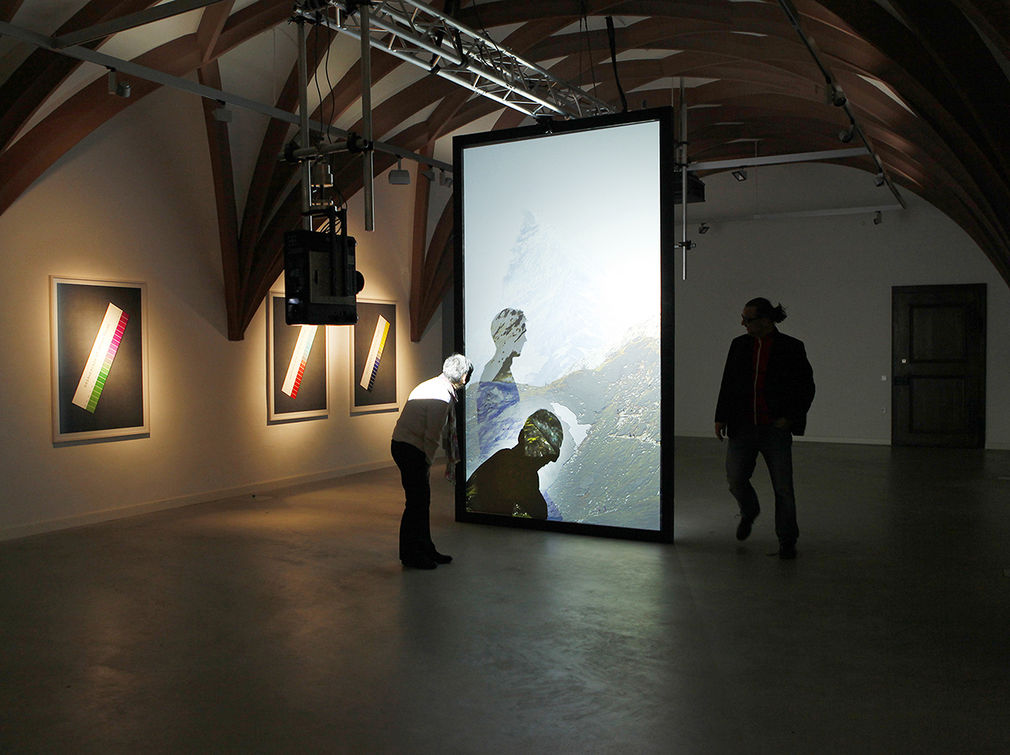
Projects 2009/10
The plastic photographic image
Winter semester 2009/10
Shortly after the invention of three-dimensional photography in 1849 there was a boom in the stereogram; peeking into the peep box of reality fascinated people in the 1920s too, and another high point was reached in 1950, including in the cinema (»Creature from the Black Lagoon«, etc.).
Three-dimensional photography and its advantages
Three-dimensional photography rendered obsolete the two-dimensional central perspective. Cylindrical and spherical panoramas permit a viewer-controlled look at a comprehensive portrayal of the world. Interactive spherical panoramas with display links are used in modern forensic photography. The latest IMAX films show three-dimensional colour films across the entire field of vision. On Google Earth the perspective shifts: no longer do we have to content ourselves with the godlike, long-distance satellite views – now big cities can be explored at eye level thanks to a matrix of interconnected spherical panoramas. The aeronauts have landed.
The theoretical basis for the production of stereoscope images by means of photography and their appropriate observation through stereoscopes
Exploration of various forms of photographic representation of space. Photography is a sphere, the Earth a plate. We will explore the spatial image in the digital conquest of likeness too. There are barely any artistic positions that seriously address the spatial image. We are treading terra incognita. Hic sunt leones.
Crime scenes
Suspicion
Summer semester 2009
A woodcutter, a monk and another person seek shelter from the rain in the ruins of a temple. Their conversation forms the frame story and serves as a starting point for flashbacks. Three days ago the woodcutter found the body of a samurai in the woods; he tells the monk about the trial that followed. Several witnesses give statements, as does the perpetrator. The only undisputed facts are that the bandit Tajomaru raped the wife of the shackled samurai right in front of him, but those involved give very different accounts to the court of what then followed. Does an objective reality actually exist? Is the image more real than the place? Does a snapshot prove that something was captured?
I see what you don’t see - Appendices of reality
From space to the surface and back again. Every point on the photograph corresponds to the reflection of a point in the room. This misinterpretation of the axial symmetry of photography has stubbornly clung on for more than 100 years.
Offenbach / Hong Kong: axial-symmetrical failing
What, for Hong Kong, is the city’s lifeline, was a complete failure in Offenbach. The second-level pedestrian zone was demolished in 2005, and now only the stumps of long-gone bridges bear witness to the failed utopia of the 1960s. The fragmented city is set to be the starting point for research work. For a century, photography was the slave of reality. Starting with classic architectural photography, a new way of looking at city, space and architecture is to be developed, with new images of urban landscapes emerging. The lens depicts every point of the space in a point on the surface. What can the camera see that the eye doesn’t see? How can the pictorial reduction of the three-dimensional to the two-dimensional be expanded to multi-dimensionality? How can a central-perspective point of view on the city be dissolved?
Projects 2007 to 2009
Size matters
Winter semester 2008/09
After the evaporation of space and time into a two-dimensional 9x13 format, the photographic image formulates its own benchmark. The shifting of the dimension, the stretching of time and the compression of the space are becoming the subject of research. Constructed image worlds, microscopic realities – captured with large format, pinhole camera and macro lens. In the universe of the image, the traces of what is really big become blurred. Little worlds. Models. Image-producing photography.
»A photograph never tells the truth.«
Richard Avedon, 1923
»A photo no longer tells the truth. It simply proposes one possibility.«
photokina 2000
On sampling the images
Summer semester 2008
Amid the white noise of the billions of images, new galaxies and supernovas are forming. Black holes in the image universe swallow vast quantities of image material. The research topic of this semester is the clash of the images. The classic technique of collage enters a new dimension. Hardly any media image remains unprocessed these days – there is endless wild sampling from the stock of photography. The subject for exploration is the field of classic collage technique (Schwitters, Heartfield, etc.) through to digitally manipulated samples (Hockney, Wall, Gursky, etc.).
»The collage technique is the systematic exploitation of the accidentally or artificially provoked encounter of two or more foreign realities on a seemingly incongruous level – and the spark of poetry that leaps across the gap as these two realities are brought together.«
Max Ernst, 1962
Images of the invisible
Below the surface of things
Winter semester 2007/08
Since photography was discovered there has been something magical about it. But can you depict magic? Photography as a process for portraying the invisible. From scientific high-speed and micro/macro photography through to fluidal and >mental photography<. Cases of fraud in occult photography and their effects on contemporary art.
- Anna and Bernhard J. Blume: Transcendental constructivism
- Sigmar Polke: »The Higher Powers Command: Paint the Upper Right Hand Corner Black!«
- Johannes Brus, Mike Kelley, John Baldessari, Marcel Duchamp, László Moholy-Nagy, Man Ray, Ted Serios
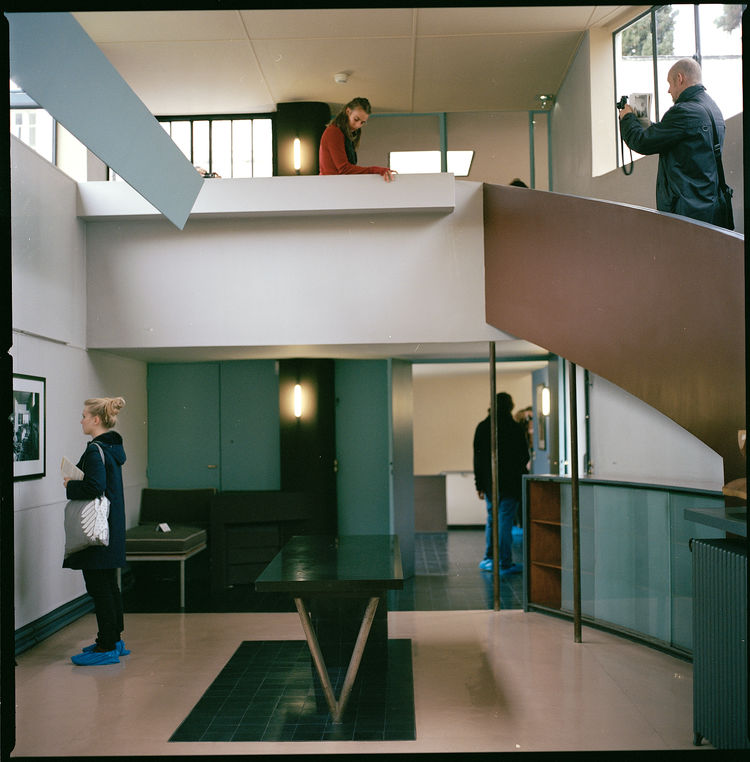
Le Corbusier04
Paris, 2013
Photo: Urs Daun
Calendar
18 November 2014 until 23 May 2019Fail Early
until 13 SeptemberLaura Brichta: Some Sort of Now
until 5 MayThe Biography of Things
until 27 AprilAsphalt
until 24 MarchIl buono, il brutto, la realtà: Andreas Schlaegel
07:00 PM, Isenburger Schloss, linke KapelleIl buono, il brutto, la realtà: Christiane Feser
07:30 PM, Isenburger Schloss, linke KapelleIl buono, il brutto, la realtà: Susanne Kriemann
07:00 PM, Isenburger Schloss, linke KapelleWernher von Braun
until 1 MarchNews
First ISO 5000 photo prize awarded
Laura Brichta is the first winner of the ISO 5000 Photo Award of the Hans-and-Annemarie-Weidmann-Foundation. The prize is exclusively tendered to students of the HfG Offenbach and was endowed with 5000 Euros.
good prospects - young german photography
HfG graduate Karolin Back is amongst the prizewinners of the photogtraphy award "good prospects – young german photography" . On 23 November, 2014 Museum Marta in Herford is showing the winners.
